Abstract
The WBR-1 strain of bovine adenovirus type 3 was suspended in Eagle's medium or bovine nasal secretion and atomized into a rotating drum at temperatures of 6 degrees C or 32 degrees C and relative humidities of 30% or 90%. Impinger samples of the aerosols were collected seven minutes, one, two and three hours postgeneration, and titrated for infectivity in embryonic bovine kidney cell cultures. Under certain conditions of temperature and relative humidity, the virus was more stable in aerosols of Eagle's medium than in nasal secretion. The bovine adenovirus was usually inactivated more rapidly at 30% relative humidity than at 90% relative humidity and during aging of the aerosols the virus was inactivated more rapidly at 32 degrees C than at 6 degrees C.
Full text
PDF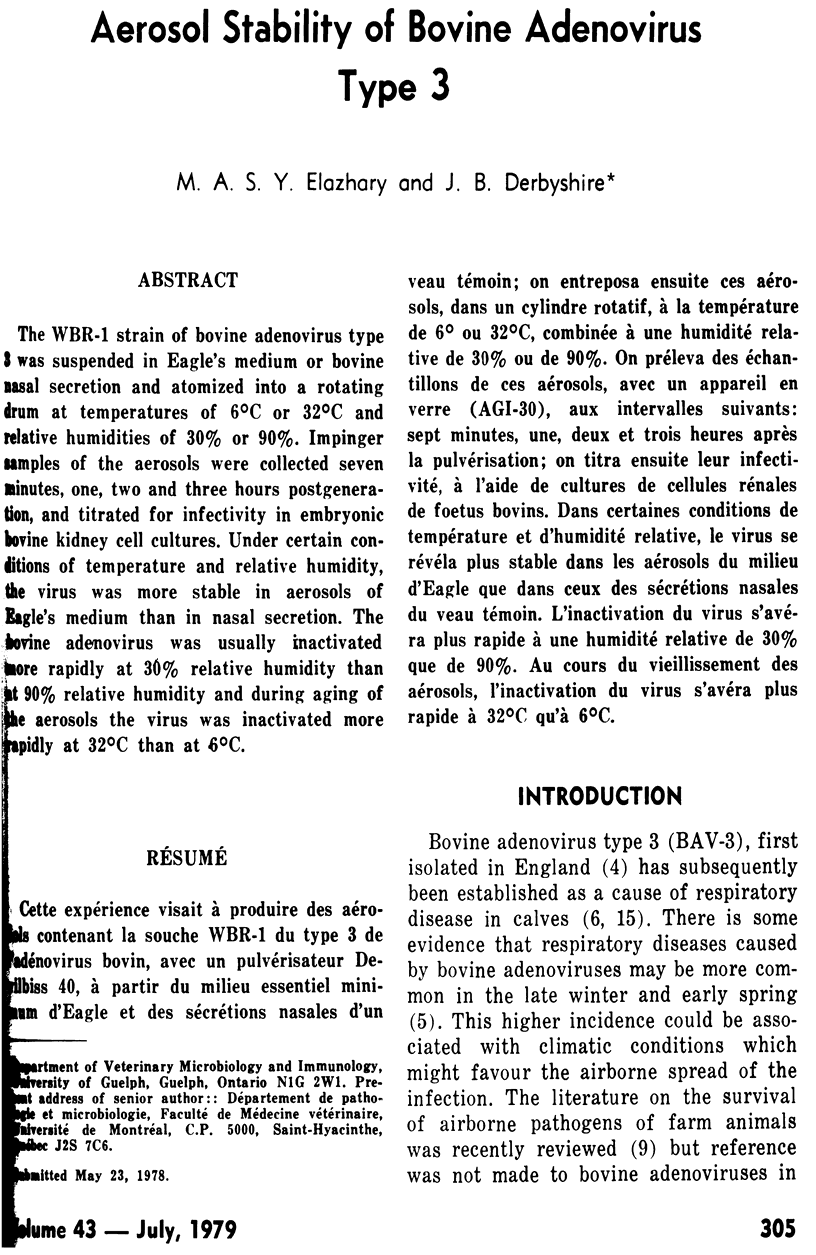

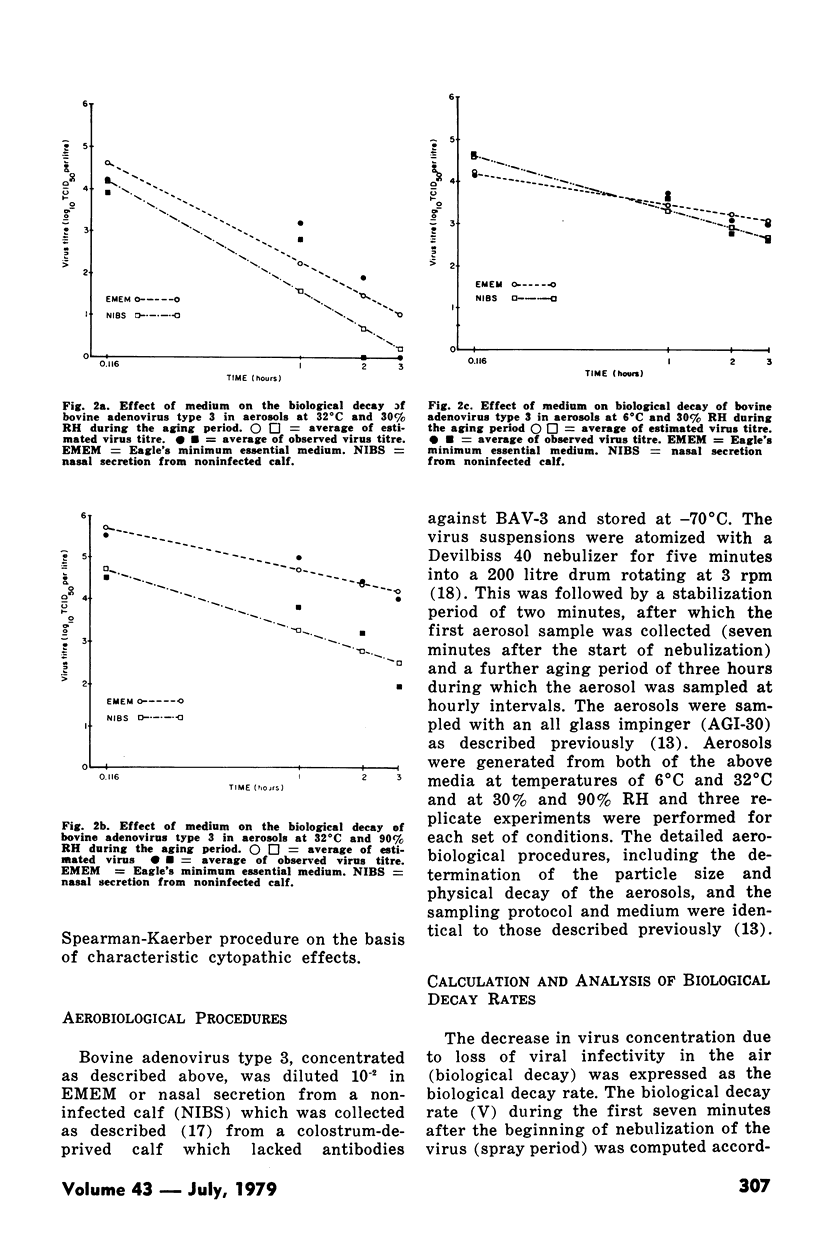
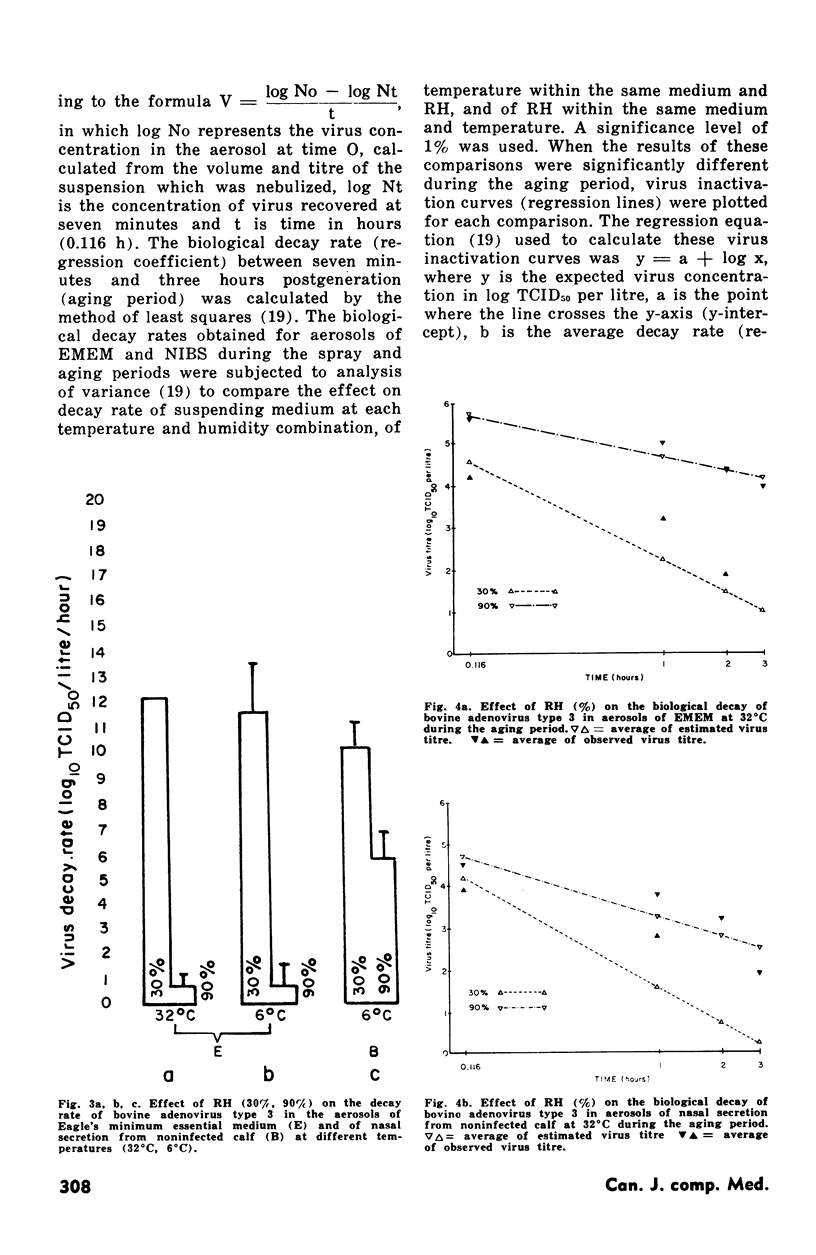
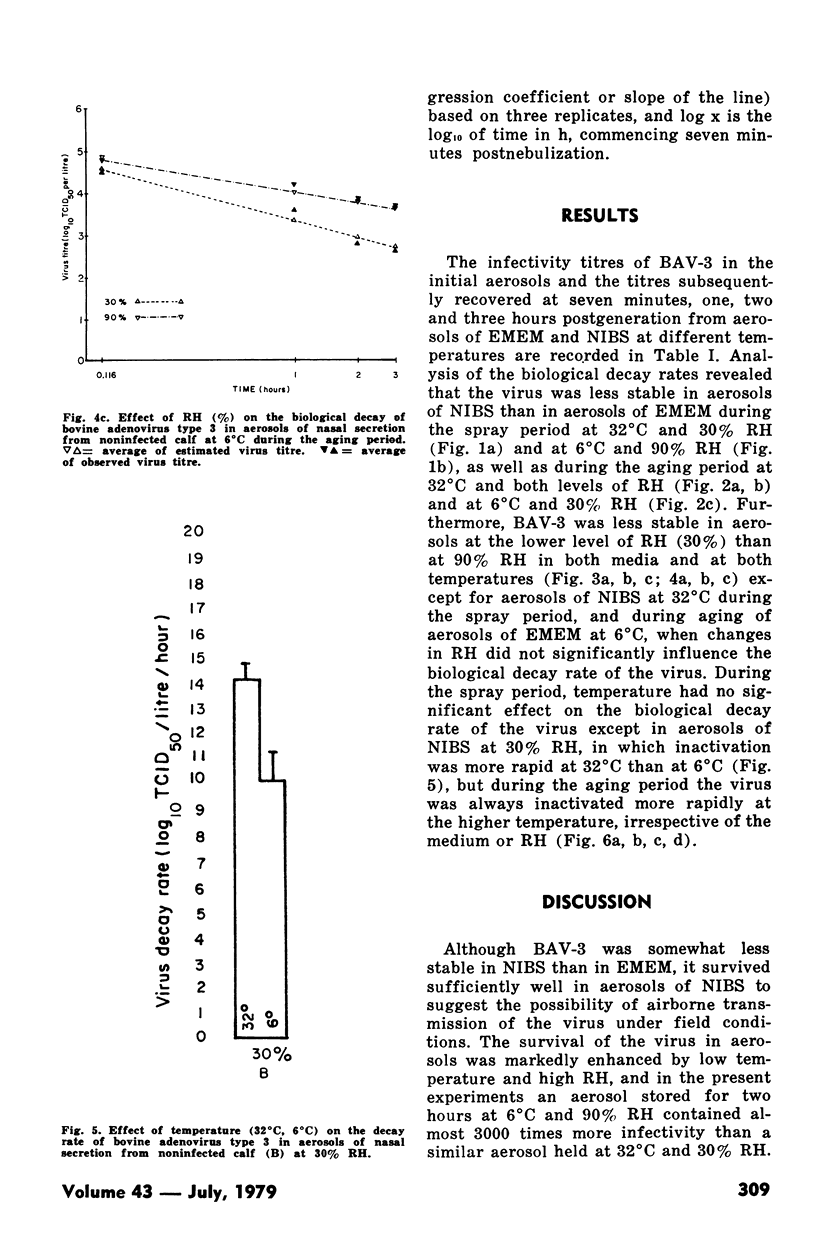
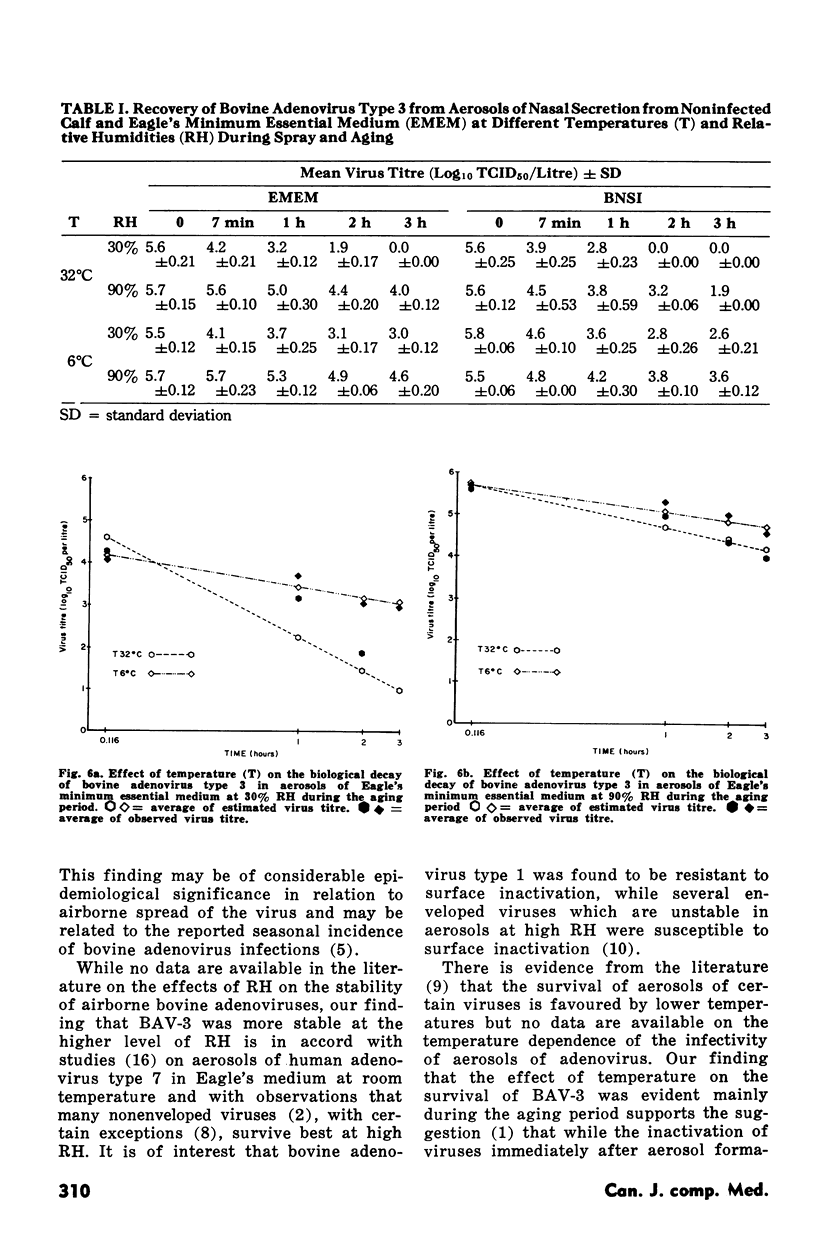
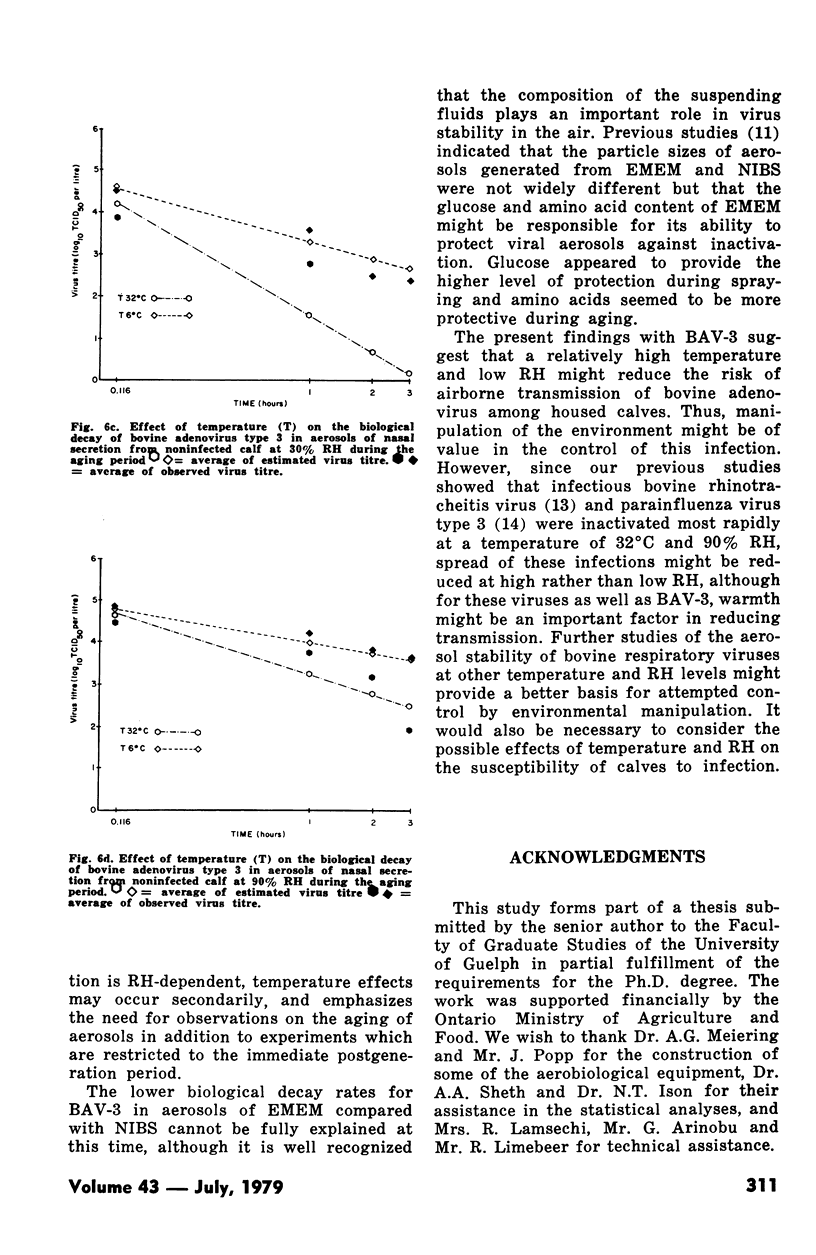
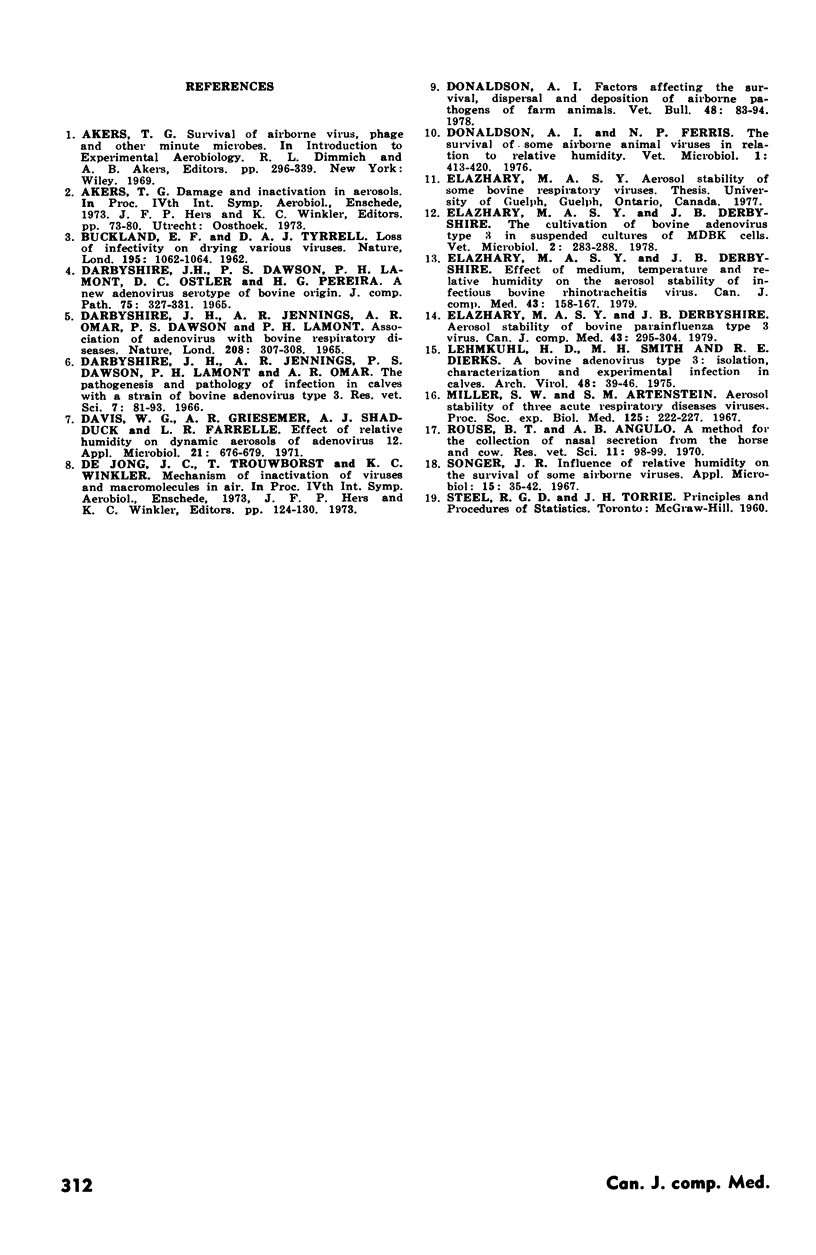
Selected References
These references are in PubMed. This may not be the complete list of references from this article.
- BUCKLAND F. E., TYRRELL D. A. Loss of infectivity on drying various viruses. Nature. 1962 Sep 15;195:1063–1064. doi: 10.1038/1951063a0. [DOI] [PubMed] [Google Scholar]
- Darbyshire J. H., Dawson P. S., Lamont P. H., Ostler D. C., Pereira H. G. A new adenovirus serotype of bovine origin. J Comp Pathol. 1965 Jul;75(3):327–330. doi: 10.1016/0021-9975(65)90038-1. [DOI] [PubMed] [Google Scholar]
- Darbyshire J. H., Jennings A. R., Dawson P. S., Lamont P. H., Omar A. R. The pathogenesis and pathology of infection in calves with a strain of bovine adenovirus type 3. Res Vet Sci. 1966 Jan;7(1):81–93. [PubMed] [Google Scholar]
- Darbyshire J. H., Jennings A. R., Omar A. R., Dawson P. S., Lamont P. H. Association of adenoviruses with bovine respiratory diseases. Nature. 1965 Oct 16;208(5007):307–308. doi: 10.1038/208307a0. [DOI] [PubMed] [Google Scholar]
- Davis G. W., Griesemer R. A., Shadduck J. A., Farrell R. L. Effect of relative humidity on dynamic aerosols of adenovirus 12. Appl Microbiol. 1971 Apr;21(4):676–679. doi: 10.1128/am.21.4.676-679.1971. [DOI] [PMC free article] [PubMed] [Google Scholar]
- Elazhary M. A., Derbyshire J. B. Aerosol stability of bovine parainfluenza type 3 virus. Can J Comp Med. 1979 Jul;43(3):295–304. [PMC free article] [PubMed] [Google Scholar]
- Elazhary M. A., Derbyshire J. B. Effect of temperature, relative humidity and medium on the aerosol stability of infectious bovine rhinotracheitis virus. Can J Comp Med. 1979 Apr;43(2):158–167. [PMC free article] [PubMed] [Google Scholar]
- Lehmkuhl H. D., Smith M. H., Dierks R. E. A bovine adenovirus type 3: isolation, characterization, and experimental infection in calves. Arch Virol. 1975;48(1):39–46. doi: 10.1007/BF01320564. [DOI] [PubMed] [Google Scholar]
- Miller W. S., Artenstein M. S. Aerosol stability of three acute respiratory disease viruses. Proc Soc Exp Biol Med. 1967 May;125(1):222–227. doi: 10.3181/00379727-125-32054. [DOI] [PubMed] [Google Scholar]
- Rouse B. T., Angulo A. B. A method for the collection of nasal secretions from the horse and cow. Res Vet Sci. 1970 Jan;11(1):98–99. [PubMed] [Google Scholar]
- Songer J. R. Influence of relative humidity on the survival of some airborne viruses. Appl Microbiol. 1967 Jan;15(1):35–42. doi: 10.1128/am.15.1.35-42.1967. [DOI] [PMC free article] [PubMed] [Google Scholar]


